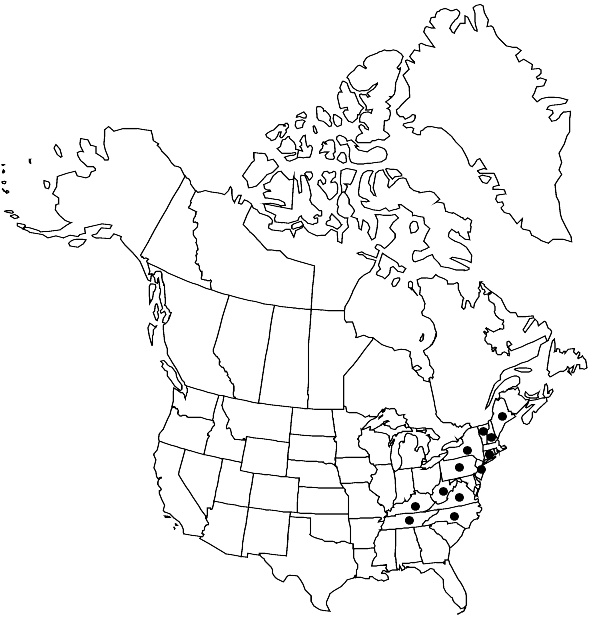Codriophorus aduncoides
in R. Ochyra et al., Cens. Cat. Polish Mosses, 140. 2003,.
Plants rather stiff and rigid, in loose tufts or mats, olivaceous to golden brown, occasionally blackish brown. Stems (1–)3(–17) cm, irregularly forked. Leaves imbricate, erect to secund when dry, ovate-elliptic, lingulate to oblong-lanceolate,(1.9–)2.3–3(–3.2) × 0.8–1.1 mm; margins 1-stratose throughout, recurved on both sides in the proximal 3/4, plane or often incurved at the apex giving it a subcucullate appearance; apices narrowly bluntly acute to broadly rounded, distantly bluntly or sharply erose-dentate to subentire, muticous; costa usually vanishing in mid leaf or sometimes extending 3/4 of the way up the leaf, frequently spurred and forked at the tip, (80–)90–180(–220) µm wide near the base; laminal cells 1-stratose throughout. Seta 8–11 mm. Capsule brown, obloid to shortly cylindric, 2–2.3 mm, peristome teeth 480–520 µm, orange- to yellow-brown, split nearly to the base into 2 filiform, densely papillose branches. Spores 14–17 µm.
Habitat: Wet acidic rocks and boulders in or close to streams, damp and wet cliffs, often submerged in swiftly flowing brooks or on rocks in waterfalls and cascades
Elevation: moderate to high elevations (300-2100 m)
Distribution

Conn., Ky., Maine, N.H., N.J., N.Y., N.C., Pa., Tenn., Vt., Va., W.Va.
Discussion
Codriophorus aduncoides is a montane, hydrophilous, acidophilous moss that can tolerate periodic desiccation. It is restricted to the Appalachian Mountains, ranging from western Maine to Tennessee and North Carolina. Codriophorus aduncoides has only recently been recognized as a species, being segregated from the common and protean C. acicularis. The two species share similar leaf shape and areolation as well as identical ecological predilections, but C. aduncoides is well-defined and easy to distinguish by the structure of the costa. It is generally shorter and vanishes in mid leaf or extends at most to three quarters of the way up the leaf. It is distinctly spurred on both sides in the distal portion and is mostly forked at the apex. Additionally, the leaves are usually falcate-secund and the leaf apex is often tubular to subcucullate owing to the inflexed margins.
Selected References
None.